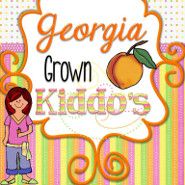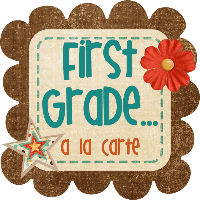Sometimes my students surprise me.
We're studying the Measurement and Data standards right now in math, and we were struggling a bit with 4.MD.2 - the measurement word problems standard. We've been using some of the
free math units from Engage NY (a resource I highly recommend), and we were on day 3 of working through word problems, and I knew I had to mix it up a bit. Here's what we did.
First, students worked through 6 word problems from module 2. The word problems were multi-step and used many different types of metric measurement. They completed these problems independently, but they could consult other students if they got stuck. Once everyone at the table finished, they checked their work with each other to make sure they agreed on the same answer.
Next, I assigned each table a different focus problem from the 6 that they solved. They had about 10-15 minutes to work together to design a poster that explained the problem and solution. They could represent their work any way they wanted, but the work had to speak for itself -- they wouldn't be there to explain the poster to anyone else.
Once the posters were completed, I gathered the students together on the carpet, and we reviewed the Standards for Mathematical Practice using
these posters I've made:
We talked about using these standards as opportunities to give feedback. We also discussed how effective feedback needs to be specific and constructive. If you like something, say what, specifically, you liked and how it helped communicate an idea. If something needed to be improved, explain what and how that could be done.
Once I felt like the students had some ideas for ways to give good feedback, I had the students do a gallery walk around the classroom to look at the other posters. In a gallery walk, students use sticky notes to comment on other people's work. They can leave positive and/or constructive feedback. I let the students comment anonymously if they wanted, and they were able to reference the SMP posters if they needed ideas (I gave them access to a digital copy on their iPads). I used a timer, and they spent 5 minutes studying and commenting on each poster before rotating.
Once they'd rotated through all of the posters, the returned to the poster their group had made, and they took a few minutes to read the feedback. I had them work together to sort the feedback into the categories "helpful" and "not helpful."
We shared a few examples of helpful comments with the whole class:
- "I like how the team drew pictures to represent the problem, but I think the team could have explained what each picture represented from the problem."
- "The pictures aren't in proportion to one another. The drawing of 1,500 mL is much larger than 3 L, but really the 3 L should be larger."
- "Something I really like about your poster is that it has pictures to represent the problems. One thing that you could have done differently is represent the subtraction and addition with a tape diagram."
- "You could have represented the answer in mixed units to make your answer clearer."
We then talked about unhelpful comments -- one word comments or feedback that focused more on style than substance.
Overall, this lesson was very helpful in getting the students to think about the Standards for Mathematical Practice and how to give effective feedback. Each group had ideas for things they wanted to change on their posters based on peer comments, and some groups even asked to work on it more during recess! It was also a good reminder for me that students can give each other powerful feedback, and I need to provide them with more opportunities to do this across the subject areas.
If you'd like to get a copy of my
student-friendly Standards for Mathematical Practice posters, they're available in my TpT store by clicking the image below.
What are some ways you incorporate peer feedback in your classroom? I'd love to hear more ideas in the comments section!







.JPG)

























